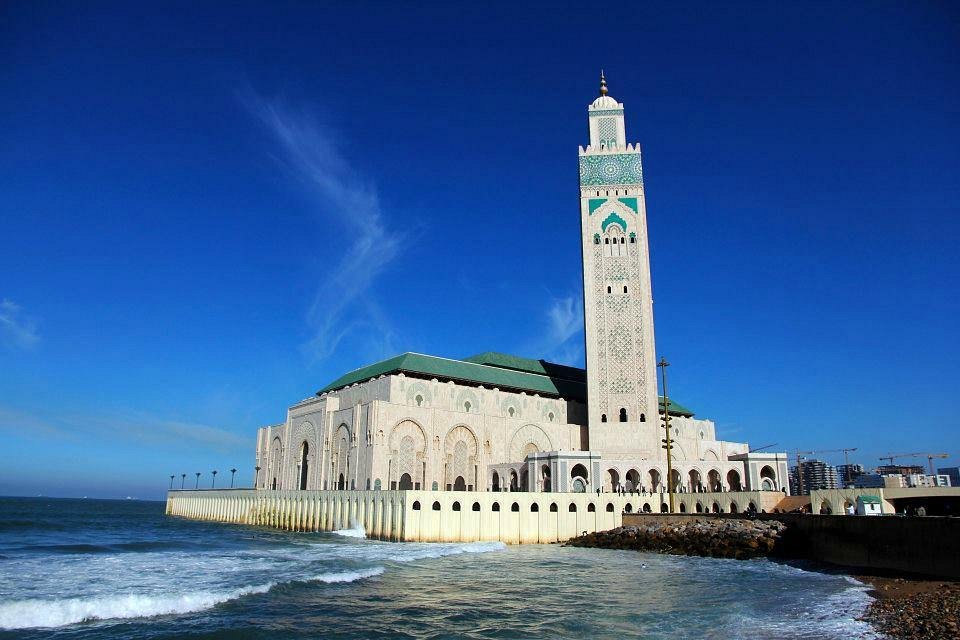Who is the French architect of the monumental mosque rising from the ocean?
The Hassan II Mosque is the fifth largest mosque in the world. This mosque, whose foundation was laid in 1980 and opened for worship in 1993, is placed on the shore of the Atlantic Ocean. The mosque, which draws attention with its 210-meter-long minaret, was built by the French architect Michel Pinseau.

In the part of the Second Hasan Mosque reserved for the protocol, a part of the floor is made of glass so that the ocean waters below can be seen. This feature adds extraordinary beauty to the structure.
Mosques in the first four of the list are as follows: Masjid al-Haram (Mecca), Masjid an-Nabawi (Medina), Imam Reza Mosque (Mashhad / Iran), and Istiklal Mosque (Jakarta / Indonesia).
The mosque, named after King Hassan II, who ruled Morocco from 1961 to 1999, has an architecture and size that fascinates visitors.
Michel Pinseau (1926 – 15 September 1999) was a French architect. He is known for his conception of the second tallest minaret in the world, Hassan II Mosque in Casablanca, Morocco. Michel Pinseau graduated from École Nationale Supérieure des Beaux-Arts in Paris in 1956. He then worked on many projects in the French capital especially in the Champs-Elysées area.
80,000 people can pray in the courtyard of the Second Hasan Mosque, one of the first buildings that come to mind when Morocco is mentioned, and 25,000 people can pray in the mosque at the same time. The mosque, which draws attention with its 210-meter-long minaret, was built by the French architect Michel Pinseau.
At the top of the minaret of the mosque, which can be easily seen from anywhere in Casablanca, there is an orgy weighing 30 tons. From the highest end of this realm, it can be seen 40 km from the city. The stonework of the mosque, which is shown as one of the most beautiful examples of stone carving, was completed in exactly 13 years, just like the construction period.
Pinseau was known as Hassan II's architect. They met in the 1970s and from then Pinseau worked on many projects in Morocco. Pinseau died on 15 September 1999 in Paris.
The minaret of the Hassan II Mosque is the tallest among mosques in the world. However, this record will be captured by the neighboring country Algeria. The mosque, which is under construction in Algiers, the capital of Algeria, will not only be the largest mosque in the world after Masjid al-Haram and Masjid an-Nabawi, but also its minaret will surpass the minaret of the Hassan II Mosque.
French architect Michel Pinseau, living in Morocco, designed the mosque, the construction of which began in July 1986. Michel Pinseau, who was commissioned by UNESCO in the past in order to renovate old buildings in Morocco and to open new settlements for development, thus thoroughly assimilated the cultural characteristics of Morocco; He was chosen as the architect of this mosque. The construction of the mosque belongs to the civil engineering group Bouygues.
King of Morocco, King II. The construction of the mosque, which was planned to be completed in 1989 for Hasan's 60th birthday, lasted until 1993. When the construction deadline passed in the early 1990s, 1,400 people worked during the day and 1,000 at night to complete the grand project.
One of the extraordinary features of the mosque is that it has an automatic sliding roof that opens in special cases. This opening ceiling unites the sky and the ocean inside the mosque. In this way, during the day; the mosque is illuminated by sunlight at night; It also makes it possible to pray under the stars. ceiling located at a height of 60 meters; It covers an area of 3,400 square meters and opens in five minutes with a weight of 1100 tons.
Stone carvings of the mosque, which is shown as one of the most beautiful examples of stone carving; It was completed in 13 years.
The roof of the mosque is covered with cast aluminum tiles, which are stronger, more reliable, and about 35 percent lighter than traditional ceramic tiles. Its minaret is covered with green tiles that turn into turquoise blue as they rise. There are dark wood-carved mezzanines reserved for women on both sides of the main prayer hall of the mosque.
After ten years have passed since the construction of the mosque was completed, structural deterioration was observed in the concrete wall. It was explained that this was due to the mosque's exposure to the salty waters of the Atlantic Ocean, in which almost half of the main projects are located. The saltwater penetrating the porous concrete of the mosque caused the rebar reinforcements to rust, the steel to expand and the concrete to crack.
Restoration work was started in April 2005 and lasted for 3 years. It is expected that the life of the mosque will be extended by 100 years with the restoration work, which used high-quality concrete and stainless steel to make the structure resistant.
